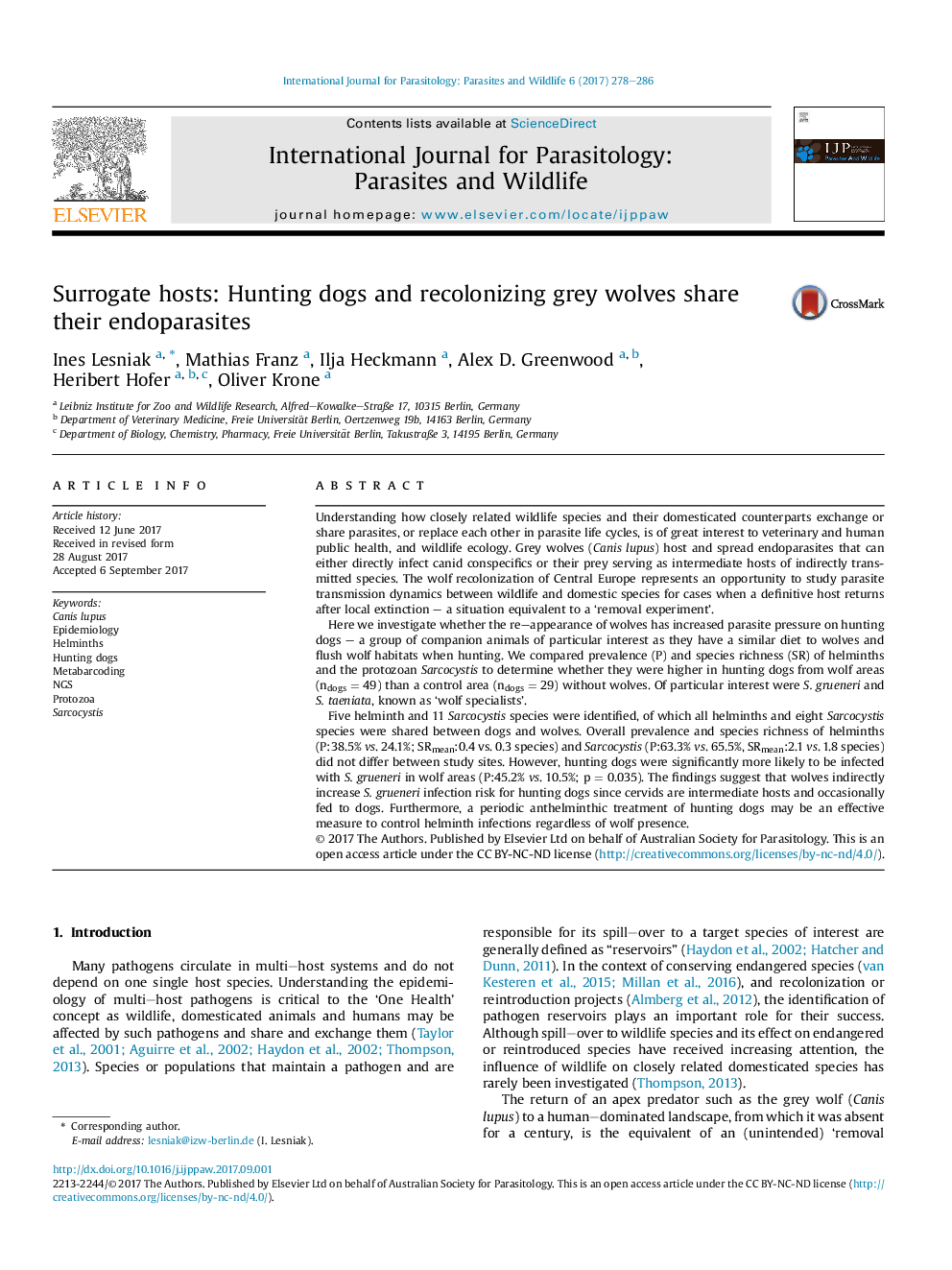| Article ID | Journal | Published Year | Pages | File Type |
|---|---|---|---|---|
| 5517905 | International Journal for Parasitology: Parasites and Wildlife | 2017 | 9 Pages |
â¢General parasite burden in hunting dogs is not increased by wolves.â¢General Sarcocystis burden in hunting dogs is high due to raw feeding.â¢'Wolf specialist' parasite S. grueneri more prevalent in hunting dogs from wolf areas.
Understanding how closely related wildlife species and their domesticated counterparts exchange or share parasites, or replace each other in parasite life cycles, is of great interest to veterinary and human public health, and wildlife ecology. Grey wolves (Canis lupus) host and spread endoparasites that can either directly infect canid conspecifics or their prey serving as intermediate hosts of indirectly transmitted species. The wolf recolonization of Central Europe represents an opportunity to study parasite transmission dynamics between wildlife and domestic species for cases when a definitive host returns after local extinction - a situation equivalent to a 'removal experiment'.Here we investigate whether the re-appearance of wolves has increased parasite pressure on hunting dogs - a group of companion animals of particular interest as they have a similar diet to wolves and flush wolf habitats when hunting. We compared prevalence (P) and species richness (SR) of helminths and the protozoan Sarcocystis to determine whether they were higher in hunting dogs from wolf areas (ndogs = 49) than a control area (ndogs = 29) without wolves. Of particular interest were S. grueneri and S. taeniata, known as 'wolf specialists'.Five helminth and 11 Sarcocystis species were identified, of which all helminths and eight Sarcocystis species were shared between dogs and wolves. Overall prevalence and species richness of helminths (P:38.5% vs. 24.1%; SRmean:0.4 vs. 0.3 species) and Sarcocystis (P:63.3% vs. 65.5%, SRmean:2.1 vs. 1.8 species) did not differ between study sites. However, hunting dogs were significantly more likely to be infected with S. grueneri in wolf areas (P:45.2% vs. 10.5%; p = 0.035). The findings suggest that wolves indirectly increase S. grueneri infection risk for hunting dogs since cervids are intermediate hosts and occasionally fed to dogs. Furthermore, a periodic anthelminthic treatment of hunting dogs may be an effective measure to control helminth infections regardless of wolf presence.
Graphical abstractDownload high-res image (212KB)Download full-size image
